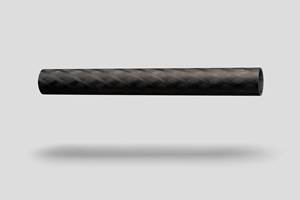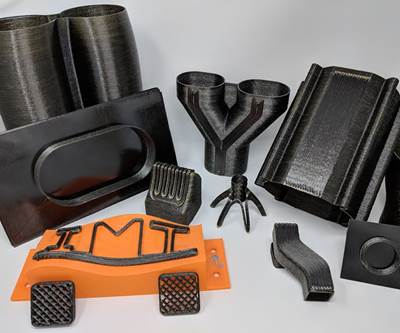The coming decade: Clarity with a strong dose of uncertainty
Columnist Dale Brosius considers the potential and uncertain role of composites in aerospace, automotive and other markets in the coming decade.

The Boeing 787 first entered service in 2011. A Hawaiian Airlines 787 is pictured. Source | Boeing
As we enter the decade of the 2020s, it’s worth reflecting what the 2010s brought to the composites community and how these innovations may or may not shape the future. In the traditional composites market of aerospace, the Boeing 787 entered service in 2011, with the similarly composites-intensive Airbus A350 XWB following in 2015. Bombardier’s CSeries single-aisle plane, with resin-infused wings, entered service in 2016. Airbus then acquired the CSeries product line in 2018, rebranding it the A220. Finally, and sadly, 2019 marked the cancellation of the Airbus A380, a larger-than-life airplane that pioneered many composite innovations.
On the automotive front, BMW shook up the industry by in 2013i8 and i3introducing the , establishing a global vertical supply chain and causing many to speculate that the age of carbon fiber-intensive vehicles would soon arrive en masse. Two years later, BMW brought forth the redesigned 7-Series, a multi-material vehicle with approximately 15 structural parts in carbon fiber, suggesting perhaps an alternate path to mass adoption. Late in the decade, General Motors unveiled a the Sierra Denali pickup truck with a compression molded carbon fiber-reinforced thermoplastic box, and in 2019 a rear-engine version of the Corvette with a curved, pultruded rear bumper beam.
In the area of composites recycling, especially for carbon fiber composites (beyond scrap fiber), the decade started with virtually no supply base and ended with more than a dozen suppliers, many providing commercial quantities into downstream applications. The wind energy industry had a banner decade, more than tripling capacity worldwide and proving to be a strong market for composites. I will cover wind in more detail next month, so will focus here on aerospace and automotive.
What will the next 10 years yield for composites?
Although I am based in the U.S., I had the opportunity in early 2019 to visit a number of research institutes in the U.K. that focus on composites, and in December I paid visits to multiple Fraunhofer Institutes and DLR facilities in northern and southern Germany, as well as several production facilities serving aerospace and automotive markets. These visits and discussions augment my observations in the U.S. as to where material and process developments are headed as we start 2020. Though differences exist at some level between countries, the main thrusts are truly global — increasing production speed and reducing costs dominate, with recycling and sustainability integral to these R&D efforts. Everything reconfirms that international collaboration to tackle these issues is not only beneficial, but imperative if composites are to truly displace traditional materials.
While questions remain, the future of composites in aerospace is becoming somewhat clearer. Despite no formal announcements regarding replacements for Boeing and Airbus single-aisle stalwarts, it is obvious that a lot of aerospace research is focused on delivering technologies to manufacture, machine, inspect and assemble large advanced composite structures at higher rates. It’s one thing to deliver 100 to 140 widebody jets per year, but another thing entirely to build 700 to 900 single-aisle aircraft annually with composite primary structures. When one considers adjacent markets in unmanned aerial vehicles (UAV) and urban air mobility (UAM) such as air taxis, the volumes are likely to be in the thousands annually. While there is considerable interest in thermoplastics, the large structures for passenger aircraft are most likely to remain in thermosets (vacuum infused or out-of-autoclave curing prepregs), with thermoplastics in clips, brackets, ribs and other smaller components. For the UAV and UAM markets, expect the industry to consider thermoplastics and also incorporate technologies developed for automotive, such as high-pressure resin transfer molding (HP-RTM), pultrusion and compression molding.
The automotive world, on the other hand, shows considerable uncertainty. There is still strong interest in carbon fiber, but its value now must be considered in light of other driving forces — electrification, mobility and autonomy — not just lightweighting for lightweighting’s sake. Over the last 10 years, cycle times and the cost of carbon fiber composites have been reduced by 50% or more, yet have further to go. Discontinuous carbon fiber, either recycled or from lower cost precursors/processes, will find a home as reinforcement for compression or injection molding compounds, where automation is high and scrap rates are low. Although BMW has recently announced that it will continue to build the i3 until 2024, the German auto industry as a whole is stepping back from new applications for continuous carbon fiber. The future for carbon fiber in high-volume primary structures will depend on getting finished part costs down to less than €18 per kilogram (approximately $10 per pound). Possible intermediate-term solutions include continuous fiberglass or hybrid glass/carbon structures, as well as increased development of hybrid overmolded components.
What will the next 10 years yield for composites? For things that fly, the future looks bright. But for ground vehicles, we still need a few breakthroughs.
Related Content
Materials & Processes: Fabrication methods
There are numerous methods for fabricating composite components. Selection of a method for a particular part, therefore, will depend on the materials, the part design and end-use or application. Here's a guide to selection.
Read MoreComposite profiles bring consistent quality to Ant-X drones
Italian drone solutions provider enlists Exel Composites to deliver pultruded and pull-wound profiles that support prototype drone structure designs.
Read MoreComposite rebar for future infrastructure
GFRP eliminates risk of corrosion and increases durability fourfold for reinforced concrete that meets future demands as traffic, urbanization and extreme weather increase.
Read MoreExel Composites pultruded rods enhance Umbrosa parasol durability
The Belgium-based manufacturer chose pultruded fiberglass ribs for many of its umbrella and parasol designs to effectively endure exposure to high wind speeds, saltwater, rain and UV.
Read MoreRead Next
CW's top 10 articles of 2019
It’s time to reflect upon the trends and innovations seen in the composites industry over the past year and contemplate what might be ahead in 2020.
Read MoreCW’s 2024 Top Shops survey offers new approach to benchmarking
Respondents that complete the survey by April 30, 2024, have the chance to be recognized as an honoree.
Read MoreFrom the CW Archives: The tale of the thermoplastic cryotank
In 2006, guest columnist Bob Hartunian related the story of his efforts two decades prior, while at McDonnell Douglas, to develop a thermoplastic composite crytank for hydrogen storage. He learned a lot of lessons.
Read More






















